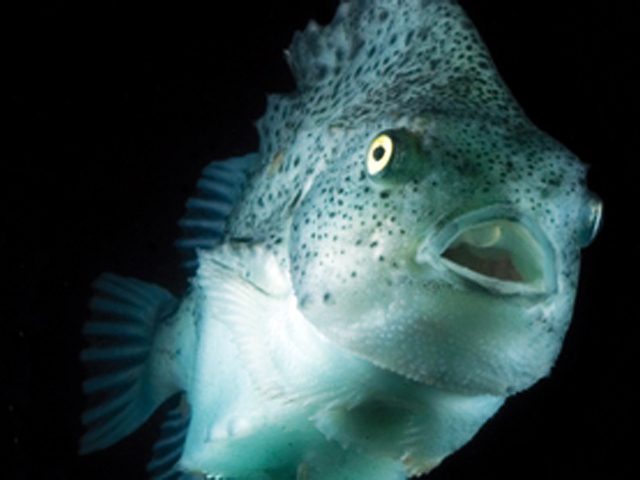“People weren’t being very strategic in the way they were using the fish, they thought ‘Oh, the numbers of lice in our pens are going up, let’s put 100,000 in and see if that works.'”
Norway’s use of lumpfish in salmon farms has seen a staggering 63 percent decline, tumbling from 43 million in 2019 to just 16 million by 2022, according to recent figures from The Norwegian Institute of Fisheries.
Lumpfish (Cyclopterus lumpus) began to gain prominence in the 2010s as a natural remedy to manage sea lice in salmon farms.
With lice infestations costing the Norwegian industry a whopping NOK 6.6 billion ($615 million) annually, as reported by Nofima, alternative solutions became imperative.
From the mid-2010s, a surge of interest in lumpfish’s potential transformed into comprehensive research about their behaviour, efficacy, and ideal rearing conditions.
Initial demand had lumpfish sourced from the wild. However, sustainability concerns shifted their production to hatcheries, with several breeding programs emerging to enhance their resilience and cleaning capability.
Yet, a regulatory curveball in 2019, where the Norwegian food authorities mandated equal treatments for both lumpfish and salmon, heralded a change in how farmers used cleaner fish with many now unwilling to take on the paperwork for what had previously been a quick fix solution.
By 2022, the overall use of cleaner fish in Norway, had dropped from 52 million in 2019 to 31 million.
End of the line? Not quite.
Rumours of the end of the cleaner fish boom may be exaggerated according to Andreas Staven, an executive at the Lumpfish breeding centre Namdal Rensefisk in central Norway.
“Those who’ve seen positive results with cleaner fish continue to see improvement with each generation,” Staven told SalmonBusiness.
The problem according to Staven was the tendency for farmers to use the fish as the quick solution to a problem, rather than in a preventative manner.
“Some people weren’t very strategic in the way they were using the cleaner fish, they thought ‘Oh, the numbers of lice in our pens are going up, let’s put 100,000 lumpfish in and see if that is a quick fix,'” he said.
“What people need to understand is that it’s more of a preventive way of delousing the fish continuously, rather than just putting them in there for three weeks, and hoping they will do the same job as a freshwater treatment.”
Nevertheless, the lumpfish mortality rate remains a major ethical concern for some.
“As farmers, we bear the responsibility for the well-being of our animals,” Staven told SalmonBusiness.
“It’s the farmers job to keep your animals healthy. And it’s the same when you are a fish farmer, a cattle farmer or a chicken farmer, you should take care of your animals.”
Does the decline in numbers following the widespread misuse of the fish mean the end for cleaner fish in the salmon industry? Staven thinks not.
“I anticipate more stabilised numbers, maybe around 20 million annually. With more experienced production companies and farmers who’ve been using cleaner fish for a decade, the results are promising,” he said.
Staven went on to emphasise the growth in expertise over the years.
“Companies that stood by lumpfish strategies, even after the downfall in 2019-2020, have invested in specialised personnel and strategies. With a decade of experience now, we’re better at breeding and vaccinations,” concluded Staven.









